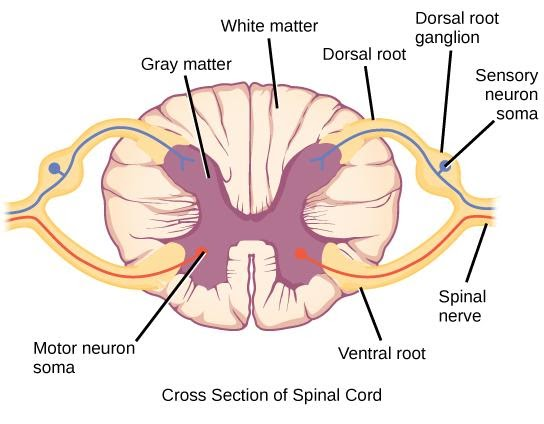
What are the types of cells present in gray matter?
Answer
487.8k+ views
Hint: It is a major component of the central nervous system . It consists of numerous cell bodies and few myelinated axons. It includes the region of the brain involved in muscle control, and sensory perception such as seeing, hearing memory, emotion speech, decision making and self –control.
Complete answer:
To answer this question, we need to know about tissues present in the central nervous system.
The central nervous system is made up of two types of tissues: Gray matter and White matter. The Gray matter comprises the regions in the brain and spinal cord that consists predominantly of cell bodies of nerves cells(neurons) and neuropil (dendrites and unmyelinated axons). Axons extend from neural cells' bodies, carrying signals between those bodies that are unmyelinated means they are not covered with whitish –colored, fatty protein called myelin.

Gray matter is also found in glial cells (astroglia and oligodendrocytes) and capillaries. The glial cells help to transport nutrients and energy to the neurons as well as influence how the neurons function and communicate. The gray matter is the site of coordination between nerves of the central nervous system which contain high density of nerve cell bodies.
Therefore, Gray matter is composed mainly of the cell bodies of neurons, branching dendrites and glial cells.
Note:-
The spinal cord has a central core gray matter, which has a shape of a butterfly when cut across. And there are clumps of gray matter called nuclei making up such structures as the hypothalamus, the thalamus of basal ganglia. Human brain consists of 60 % of white matter and 40% of gray matter. Gray matter isn’t actually gray in color at all; it is healthy pink due to the blood that’s constantly flowing through.
Complete answer:
To answer this question, we need to know about tissues present in the central nervous system.
The central nervous system is made up of two types of tissues: Gray matter and White matter. The Gray matter comprises the regions in the brain and spinal cord that consists predominantly of cell bodies of nerves cells(neurons) and neuropil (dendrites and unmyelinated axons). Axons extend from neural cells' bodies, carrying signals between those bodies that are unmyelinated means they are not covered with whitish –colored, fatty protein called myelin.

Gray matter is also found in glial cells (astroglia and oligodendrocytes) and capillaries. The glial cells help to transport nutrients and energy to the neurons as well as influence how the neurons function and communicate. The gray matter is the site of coordination between nerves of the central nervous system which contain high density of nerve cell bodies.
Therefore, Gray matter is composed mainly of the cell bodies of neurons, branching dendrites and glial cells.
Note:-
The spinal cord has a central core gray matter, which has a shape of a butterfly when cut across. And there are clumps of gray matter called nuclei making up such structures as the hypothalamus, the thalamus of basal ganglia. Human brain consists of 60 % of white matter and 40% of gray matter. Gray matter isn’t actually gray in color at all; it is healthy pink due to the blood that’s constantly flowing through.
Recently Updated Pages
Why are manures considered better than fertilizers class 11 biology CBSE

Find the coordinates of the midpoint of the line segment class 11 maths CBSE

Distinguish between static friction limiting friction class 11 physics CBSE

The Chairman of the constituent Assembly was A Jawaharlal class 11 social science CBSE

The first National Commission on Labour NCL submitted class 11 social science CBSE

Number of all subshell of n + l 7 is A 4 B 5 C 6 D class 11 chemistry CBSE

Trending doubts
Differentiate between an exothermic and an endothermic class 11 chemistry CBSE

10 examples of friction in our daily life

One Metric ton is equal to kg A 10000 B 1000 C 100 class 11 physics CBSE

Difference Between Prokaryotic Cells and Eukaryotic Cells

1 Quintal is equal to a 110 kg b 10 kg c 100kg d 1000 class 11 physics CBSE

State the laws of reflection of light




